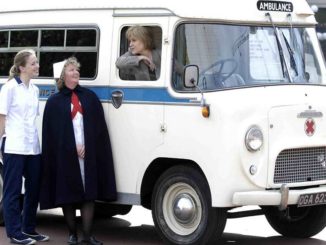Samuel Langhorne Clemens, better known by his pen name Mark Twain was an American writer and humourist as well as having a multitude of other careers throughout his life. He is probably best known for novels such as The Adventures of Tom Sawyer and Adventures of Huckleberry Finn. He also wrote more autobiographical books including Life on the Mississippi describing his childhood and career as a river boat pilot, (from which he took his pen name), and Roughing It about his time in the Nevada silver mines.
Although he is immediately associated with America, he also spent several years in Europe and wrote two accounts of his travels. The first is the account of a trip to the Mediterranean and Holy Land on the cruise ship Quaker City, originally a collection of travel letters. This became The Innocents Abroad (1869). The Innocents Abroad, Ch 18
The second is an account of a walking tour (although in fact very little walking occurs) through Germany, the Alps and Italy, A Tramp Abroad (1880). The Innocents Abroad, Ch 27
Both books are probably best not considered as fully factual accounts. Mark Twain can not resist asides into the fanciful if not ridiculous (travelling by glacier) and is always willing to branch off into a shaggy dog story (the Man who put up at Gadsby’s). Much of the humour comes from the interactions of the author and his party with the situations and people that they meet on their journeys.
However, he does have a sharp eye and wonderful descriptive ability not only for types of people, especially other tourists but the places and sights. Many of his descriptions of places are still surprisingly accurate today almost a century and a half later. Personally, I find that the fact that the descriptions of places such as Chamonix, Lucerne or the centre of Milan are still instantly recognisable rather comforting in a world of increasing change.
I have picked three examples from the two books, all of which describe places that I know and conveniently have photos of, and will have a brief explanation of them, followed by Twain’s description (spellings and punctuation are original) and my photos.
The first description comes from The Innocents Abroad and is of the statue of St Bartholomew in the Milan Duomo (cathedral). The statue was carved by the sculptor Marco d’Agrate in 1562 and shows the saint looking surprisingly nonchalant following his martyrdom by skinning alive. When you look carefully you realise the robe he has draped around him is in fact his skin.
“The guide showed us a coffee-colored piece of sculpture which he said was considered to have come from the hand of Phidias, since it was not possible that any other artist, of any epoch, could have copied nature with such faultless accuracy. The figure was that of a man without a skin; with every vein, artery, muscle, every fiber and tendon and tissue of the human frame represented in minute detail. It looked natural, because somehow it looked as if it were in pain. A skinned man would be likely to look that way unless his attention were occupied with some other matter. It was a hideous thing, and yet there was a fascination about it some where. I am very sorry I saw it, because I shall always see it now. I shall dream of it sometimes. I shall dream that it is resting its corded arms on the bed’s head and looking down on me with its dead eyes; I shall dream that it is stretched between the sheets with me and touching me with its exposed muscles and its stringy cold legs.”

© Notanumber! 2023

© Notanumber! 2023
The second description is from A Tramp Abroad and is of the Lion Monument in Lucerne. This was carved in 1820-21 and commemorates the Swiss Guards who were massacred in 1792 during the French Revolution. It is estimated nearly a thousand Swiss Guards died either defending the Tuileries or in later massacres. Kark Pfyffer von Altishofen, an officer of the Guards who was on leave in Lucerne organised a public subscription to finance a commemorative monument in 1818.
“The Lion lies in his lair in the perpendicular face of a low cliff—for he is carved from the living rock of the cliff. His size is colossal, his attitude is noble. His head is bowed, the broken spear is sticking in his shoulder, his protecting paw rests upon the lilies of France. Vines hang down the cliff and wave in the wind, and a clear stream trickles from above and empties into a pond at the base, and in the smooth surface of the pond the lion is mirrored, among the water-lilies.
Around about are green trees and grass. The place is a sheltered, reposeful woodland nook, remote from noise and stir and confusion—and all this is fitting, for lions do die in such places, and not on granite pedestals in public squares fenced with fancy iron railings. The Lion of Lucerne would be impressive anywhere, but nowhere so impressive as where he is.”

© Notanumber! 2023

© Notanumber! 2023
The third description is also from A Tramp Abroad and is of a mountain, the Jungfrau. This peak is in one of what I always think of as the northern edge of the true high Alps. Along with the Eiger and Monch it forms the classic alpine backdrop to the Bernese Oberland resorts of Grindlewald, Wengen and Murren. However, back in the nineteenth century, before the advent of mountain railways and cable cars, many tourists would have only seen them from the town of Interlaken, where Mark Twain stayed. Getting closer into the peaks would take more effort and judging by some of the illustrations in the book, he did do that. He also describes the feeling of peace and comfort that I personally find in that region. A friend once said, “there is something about being in the mountains that is good for the soul” and for me none more than these.
“This was the mighty dome of the Jungfrau softly outlined against the sky and faintly silvered by the starlight. There was something subduing in the influence of that silent and solemn and awful presence; one seemed to meet the immutable, the indestructible, the eternal, face to face, and to feel the trivial and fleeting nature of his own existence the more sharply by the contrast. One had the sense of being under the brooding contemplation of a spirit, not an inert mass of rocks and ice—a spirit which had looked down, through the slow drift of the ages, upon a million vanished races of men, and judged them; and would judge a million more—and still be there, watching, unchanged and unchangeable, after all life should be gone and the earth have become a vacant desolation.
While I was feeling these things, I was groping, without knowing it, toward an understanding of what the spell is which people find in the Alps, and in no other mountains—that strange, deep, nameless influence, which, once felt, cannot be forgotten—once felt, leaves always behind it a restless longing to feel it again—a longing which is like homesickness; a grieving, haunting yearning which will plead, implore, and persecute till it has its will. I met dozens of people, imaginative and unimaginative, cultivated and uncultivated, who had come from far countries and roamed through the Swiss Alps year after year—they could not explain why. They had come first, they said, out of idle curiosity, because everybody talked about it; they had come since because they could not help it, and they should keep on coming, while they lived, for the same reason; they had tried to break their chains and stay away, but it was futile; now, they had no desire to break them. Others came nearer formulating what they felt; they said they could find perfect rest and peace nowhere else when they were troubled: all frets and worries and chafings sank to sleep in the presence of the benignant serenity of the Alps; the Great Spirit of the Mountain breathed his own peace upon their hurt minds and sore hearts, and healed them; they could not think base thoughts or do mean and sordid things here, before the visible throne of God.”

© Notanumber! 2023

© Notanumber! 2023
© text & images Notanumber! 2023



